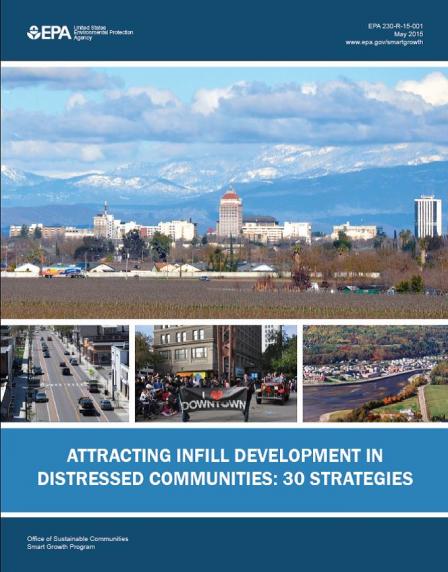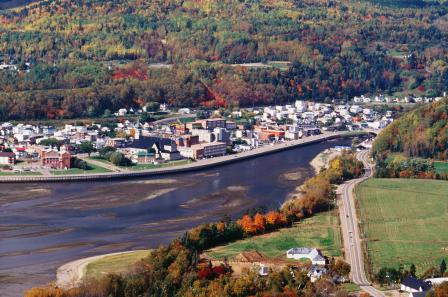30 strategies to help local governments overcome obstacles and encourage infill development in distressed communities
 After World War II, many communities in the United States developed outside city and town centers, leaving older neighborhoods, traditional downtowns, and central business districts abandoned and underserved. In the past two decades, some communities have revitalized their central neighborhoods through infill development. However, economically distressed communities have been less able to attract infill development and attain the accompanying economic, environmental, health, and quality of life benefits.
After World War II, many communities in the United States developed outside city and town centers, leaving older neighborhoods, traditional downtowns, and central business districts abandoned and underserved. In the past two decades, some communities have revitalized their central neighborhoods through infill development. However, economically distressed communities have been less able to attract infill development and attain the accompanying economic, environmental, health, and quality of life benefits.
Infill development occurs in a built-up neighborhood, often using vacant land or rehabilitating existing properties. Infill development can bring many benefits, including financial savings for municipalities, increased property values for residents and businesses, easier travel, reduced pollution, and economic stabilization of neighborhoods.
This report helps communities determine their readiness to pursue infill development and identify strategies to better position themselves to attract infill development.
- It presents strategies and case studies to establish priorities, policies, and partnerships and change public perceptions, which can help make infill development more feasible.
- It discusses innovative strategies to help finance infill development and replace aging infrastructure.
- It includes in the appendix comprehensive self-assessment questions communities can answer to determine if they are ready to pursue infill development and if particular strategies are appropriate for their context.
 Infill development is compact, which makes walking and biking easier and more appealing and typically consumes less land. Photo source: Mike BellamenteMany of the strategies in this publication stem from a task force assembled in Fresno, California, as part of the Strong Cities, Strong Communities (SC2) initiative. In 2011, Fresno was selected as one of seven cities to participate in the SC2 initiative, which provides intensive technical assistance and capacity building to economically distressed cities. Learn more about the work in Fresno and its results in EPA's "Community Stories" story map (link will open in a new window or tab).
Infill development is compact, which makes walking and biking easier and more appealing and typically consumes less land. Photo source: Mike BellamenteMany of the strategies in this publication stem from a task force assembled in Fresno, California, as part of the Strong Cities, Strong Communities (SC2) initiative. In 2011, Fresno was selected as one of seven cities to participate in the SC2 initiative, which provides intensive technical assistance and capacity building to economically distressed cities. Learn more about the work in Fresno and its results in EPA's "Community Stories" story map (link will open in a new window or tab).
As part of this work, EPA and the state of California partnered with the city to convene a task force of more than 20 of California’s leading experts in development finance, law, public policy, planning, and business. The task force identified strategies to promote infill that were feasible in Fresno’s challenging economic and fiscal environment, and EPA developed this publication based in part on the task force’s work.
The report is the basis for a tool being delivered through the Building Blocks for Sustainable Communities technical assistance program.
Find more resources on smart growth and infill development.
You may need a PDF reader to view some of the files on this page. See EPA’s About PDF page to learn more.- Attracting Infill Development in Distressed Communities (PDF)(85 pp, 3 MB, 2015)
